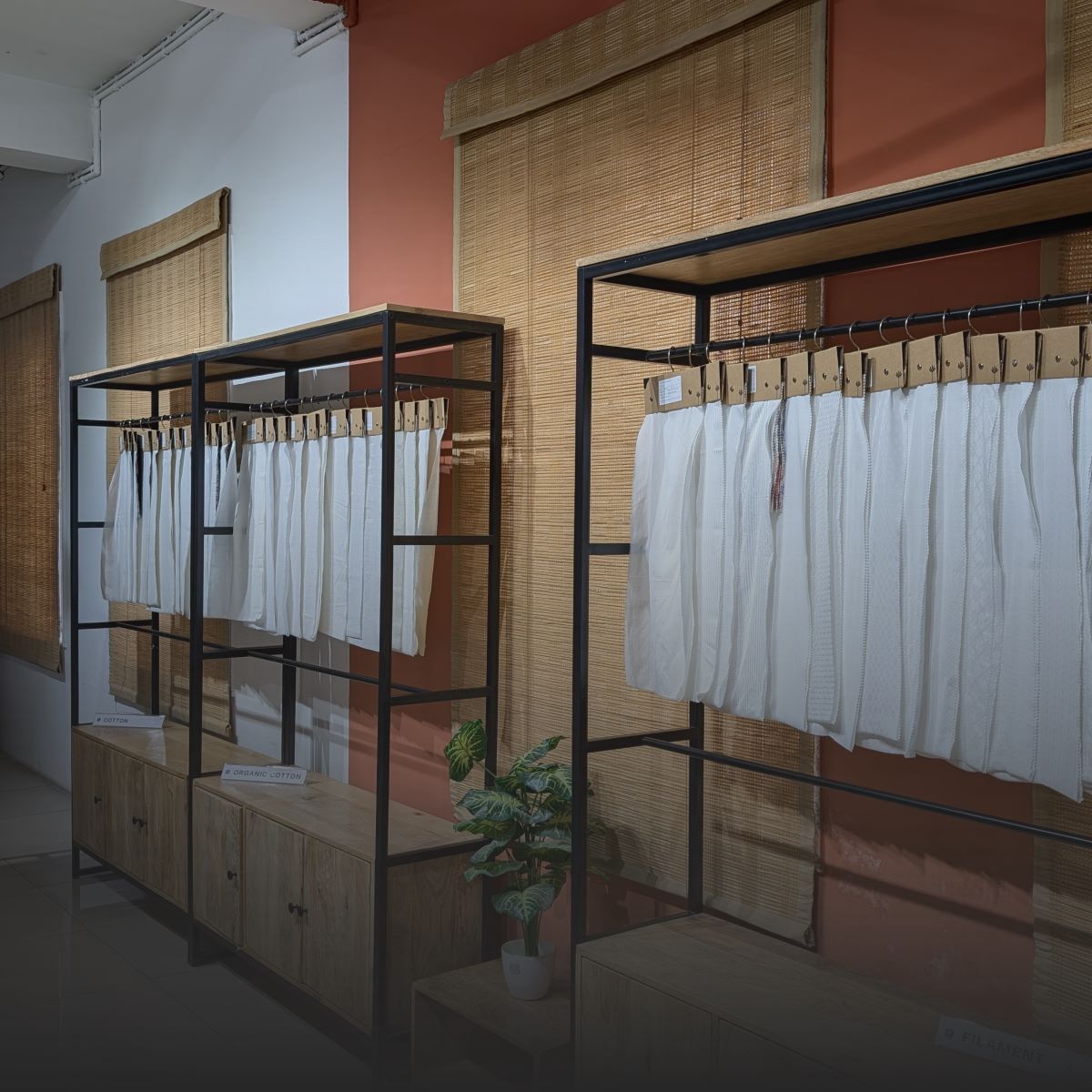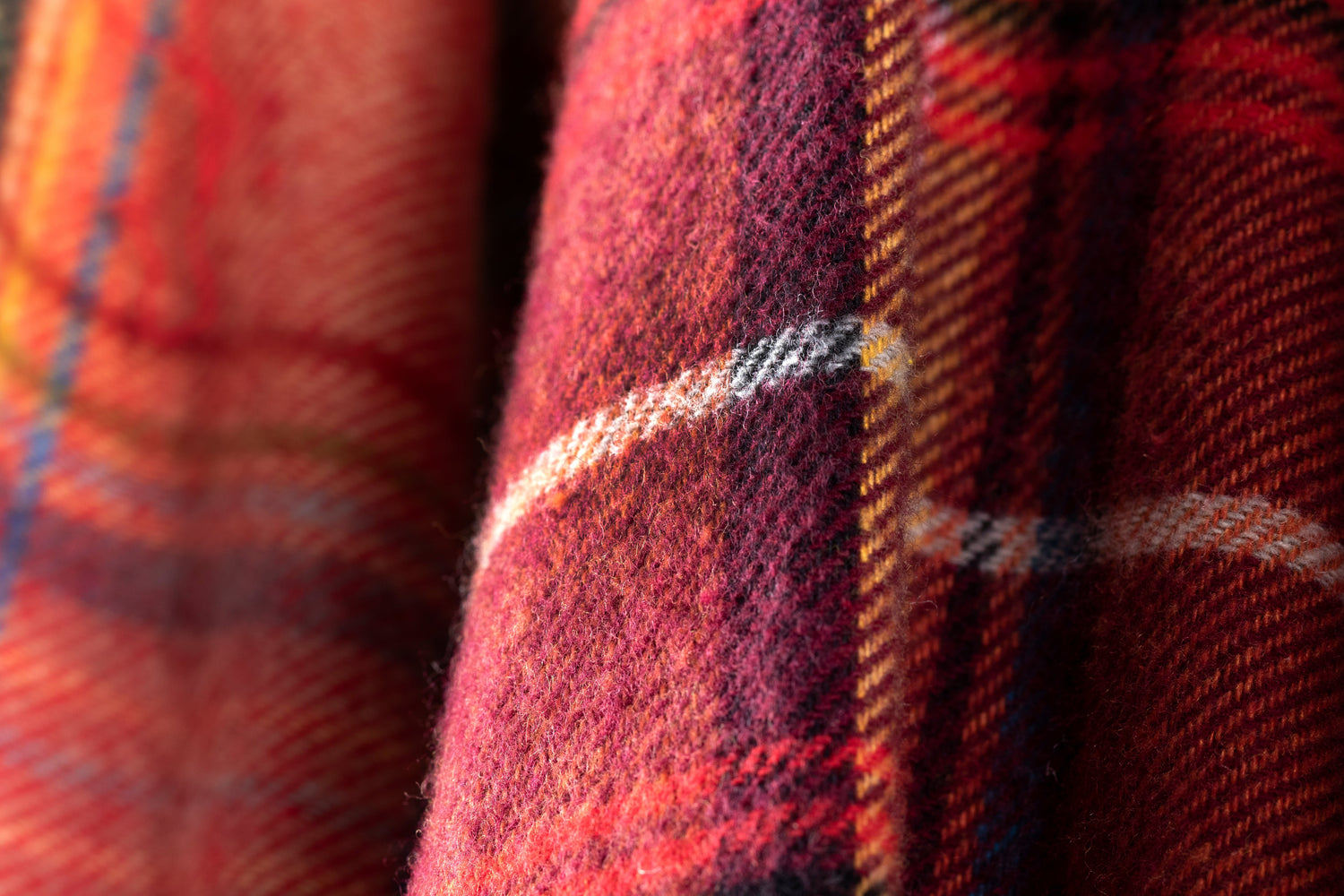In a market increasingly driven by performance, style and cost efficiency, Cashmilon fabric has emerged as a smart alternative to natural wool and cashmere. With the feel of luxury, but the technical resilience of synthetic blends, it offers apparel brands the chance to combine softness, washability and affordability. For designers and sourcing managers, understanding how Cashmilon is engineered, finished and applied is key to unlocking its value in both fashion and lifestyle categories. Discover its composition, key characteristics, performance specs, sourcing strategy, and application insights.
What Is Cashmilon Fabric?
Cashmilon is a synthetic fiber or fabric type designed to imitate the look and feel of natural wool or cashmere, while offering superior durability and lower cost.
- Primary fiber basis: Acrylic (polyacrylonitrile) or acrylic blends.
- Origin: The name "Cashmilon" blends "cashmere" + "nylon/acrylic" (or "cash-m-ilon") and was developed to mimic the soft luxury of cashmere at synthetic cost.
- Key manufacturing note: It uses polymer-based yarns with volumetric structure (often textured or brushed) to create a lofty, warm hand-feel.
Because it is synthetic (or a blend) rather than pure animal fibre, Cashmilon offers benefits in washability, shrinkage control, colour retention and hypoallergenic behaviour.
Key Characteristics of Cashmilon Fabric
Here is a short paragraph followed by bullet points of Cashmilon's core properties.
Cashmilon fabric is valued because it delivers a soft, warm, wool-like hand while adding technical advantages — durability, colour stability, lightweight feel, easy care — making it ideal for both apparel and home textile applications.
Characteristics:
- Exceptionally soft hand reminiscent of cashmere or wool.
- Lightweight yet warm: Sound insulation without the bulk of heavy wool.
- Excellent colourfastness: Synthetic yarns allow strong, lasting dye-colour combinations.
- Durable and stable: Resists shrinkage, pilling, and maintains shape even after repeated washes.
- Hypoallergenic and easy to care for: Suitable for sensitive skin, machine-washable versions exist.
- Thermal performance with breathability: Good retention of warmth with a lightweight structure.

Benefits for Apparel Brands & Textile Buyers
Cashmilon offers a unique value proposition for apparel brands, private labels, and textile buyers because it combines style, performance and cost‐effectiveness.
For sourcing professionals, it means being able to position products as "luxury feel" without the premium cost of authentic cashmere, while also gaining manufacturing ease and faster turnaround.
Brand benefits include:
- Cost-effective luxury: Achieve a cashmere/wool-like aesthetic at lower fibre cost.
- Small-batch flexibility: Synthetic yarns and mill processing make shorter runs and diverse colours viable.
- Print/dye versatility: Though often used for solid knits or weaves, acrylic-based yarns take vibrant colours well, enabling trend-driven seasonal collections.
- Easy wash & care position: Machine-washable Market garments, shape-retaining, appealing for modern consumers.
- Durability & fewer returns: Reduced shrinkage, less pilling → better performance, fewer quality complaints.
- Broader usage: Suitable for winter apparel (sweaters, cardigans, jackets), accessories (scarves, shawls), and even home textiles (throws, blankets).
Comparison Table (vs relevant fabrics)
Here's a comparison to help sourcing teams decide when to choose Cashmilon over natural wool or other synthetics:
|
Fabric |
Key Traits |
Best Use |
|
Cashmilon (acrylic blend) |
Soft, wool-look, lightweight, colourfast, easy care |
Mid-price sweaters, shawls, home throws |
|
Natural Wool |
Natural fibre, excellent insulation, premium feel, variable cost & care |
Premium outerwear, high-end knits |
|
Polyester Wool-Look |
Durable, economical, less natural hand, sometimes lower breathability |
Entry-level knits, fashion layering |
Types & Constructions Available
Cashmilon is available in multiple fabric/yarn constructions — brands and buyers should be aware of each variant and match them to end-use.
|
Type |
Typical Composition |
Texture & Appearance |
Common Uses |
|
100% Acrylic Cashmilon |
100% polyacrylonitrile / acrylic |
Soft, brushed, wool-like |
Budget sweaters, shawls |
|
Acrylic/Wool Blend |
Acrylic + small % wool |
Wool-look with added natural fibre warmth |
Higher end knits |
|
Printed / Check Cashmilon Fabric |
Acrylic base with prints/checks |
Lightweight, pattern-ready |
Plaid scarves, outerwear lining fabrics |
|
Upholstery / Home Textile Cashmilon |
Acrylic or acrylic blend heavy construction |
Dense, durable, soft |
Throws, blankets, decorative cushions |
Technical & Specification Guide
For sourcing professionals, here's what to specify and check when dealing with Cashmilon fabric.

Fibre & Yarn Specifications
- Primary fibre: Acrylic (polyacrylonitrile) or acrylic + supplementary fibre.
- Yarn count & twist: Medium-fine counts for knitwear; typically lower twist for soft hand.
- Finish: Brushed, napped or raised surface to mimic wool/cashmere texture.
Fabric Weave/Knit & Weight
- Knit constructions are most common (sweaters, cardigans).
- Weight (GSM or similar specification): Typically 180-300 GSM for mid-weight sweaters; lighter versions 140-180 GSM for cardigans. Michael's data: a manufacturer lists 180 GSM for check fabric.
- Width: Often 42–58 inches (106–147 cm) for woven checks; knits vary with roll width.
Performance Metrics
- Colourfastness: High due to synthetic yarn base; critical for deep colours.
- Shrinkage: Lower than wool; still verify machine-wash performance for "easy care" claims.
- Pilling resistance: Acrylic still can pill; finishing and quality control are essential.
- Thermal insulation & breathability: Excellent warmth for weight; breathable when designed with an appropriate structure.
- Wash/care: Many Cashmilon fabrics support machine-wash cycles, low-iron or no-iron finish.
Sourcing Cashmilon Fabric in Bulk — Step-by-Step
Here's a recommended workflow for sourcing Cashmilon for an apparel or textile collection.
- Define product brief – Include desired end-use (sweater, shawl, home throw), composition (100% acrylic or blend), weight (GSM), width, colour/pattern (plain, check, jacquard).
- Request swatches & sample yardage – Get small samples (1-2 m) to assess hand, weight, drape, colour-shade.
- Lab & performance tests – Colourfastness, pilling, shrinkage, wash cycle behaviour, colour retention after sun exposure.
- Confirm MOQ & lead-time – Many Indian suppliers list MOQs from 100–500 m for woven checks; knits may have higher minimums.
- Bulk order – For successful samples, place a bulk PO, specify roll lots, ensure consistent dye lots, and finish the specification.
- Quality control & logistics – Upon delivery, inspect roll weight, width, shade consistency, and pilling after sample wash.
- Production & finishing – Ensure that fabric is compatible with your cut/sew operations, knitting/machine gauge, and finishing (brushing, raising, setting).
- Packaging & branding – Label fabric content clearly (e.g., "Cashmilon™ Acrylic Blend"), care label and maintain traceability.
Applications by Category
Cashmilon fabric covers a range of product categories thanks to its versatility.
|
Category |
Recommended Cashmilon Type |
Key Benefits |
|
Sweaters & Cardigans |
Acrylic Cashmilon knit (180-300 GSM) |
Soft feel, cost efficient alternative to wool |
|
Shawls & Wraps |
Lightweight Cashmilon woven (140-180 GSM) |
Warm, soft, vibrant colour retention |
|
Jackets & Outerwear linings |
Acrylic/Wool-Blend Cashmilon |
Wool-look aesthetic with lower cost |
|
Home Textiles (Throws) |
Dense Cashmilon woven (300+ GSM) |
Soft, durable, colour-fast for décor |
|
Accessories (Hats, Mittens) |
Cashmilon yarns/knits |
Easy wash, lightweight warmth, hypoallergenic |
Care & Maintenance Recommendations
To ensure longevity of garments or textiles made from Cashmilon, follow best practices:
- Machine wash in cold water (30 °C) on gentle cycle, or hand wash.
- Use mild detergents; avoid bleach or harsh chemicals.
- Do not wring; reshape while damp and dry flat to avoid distortion.
- Low-heat iron if necessary; better to steam to preserve loft.
- For storage, fold rather than hang heavy knits to avoid stretching; keep in a cool, dry place.
- Regularly brush and spot-clean for piled surfaces; avoid moth damage (though synthetic base reduces risk).
Sustainability & Ethical Considerations
While Cashmilon is a synthetic fabric, there are several aspects brands should note:
- Because it uses acrylic/acrylonitrile, it is fossil-based; however, its durability and easy-care attributes may contribute to longer product life.
- Some suppliers may blend wool or recycled fibres; verify the content specification.
- Colourfastness and machine-washability reduce the frequency of replacement of garments.
- Brands can differentiate by sourcing from suppliers with environmental credentials (e.g., low-impact dyes, Oeko-Tex certified acrylics).
- Recycling of acrylic is still challenged; circular economy plans should be considered.
Trends & Industry Insights
- Demand for wool-look but easy-care fabrics is rising — Cashmilon fits well with consumer preference for a premium feel at an affordable price.
- Growth in Indian B2B manufacturing of Cashmilon enables mid-price winter apparel segments.
- Illumination of colour retention and machine-wash features (such as seen in UK retailer use) strengthens its position in fast-fashion as well as mid-tier positioning.
- Development of blends (acrylic + wool, acrylic + recycled polyester) and prints (checks, jacquard) expands the application scope.

Final Thoughts
Cashmilon fabric is a great choice because it combines luxury aesthetic, performance functionality, and cost efficiency. Cashmilon is an alternative to natural wool or cashmere that doesn't hurt the look or feel of the fabric for brands that are aiming for mid-market or premium value groups. When sourcing, specifying the right weight, yarn structure, finishing, and verifying performance metrics is critical. With proper care, Cashmilon garments and home textiles deliver long-term value.
If you're a designer or buyer planning winter apparel or soft-textile lines, Cashmilon deserves a place in your fabric library. Explore swatches, check supplier capabilities, and match your SKU strategy — whether sweaters, shawls, home throws or outerwear linings.
FAQs — Cashmilon Fabric
Q1. What Exactly Is Cashmilon Fabric Made Of?
Cashmilon is primarily made of acrylic or polyacrylonitrile yarns (sometimes blended) engineered to mimic wool or cashmere.
Q2. How Does Cashmilon Differ From Natural Wool Or Cashmere?
Unlike natural wool or cashmere, Cashmilon is synthetic, offering easier care, lower cost, less shrinkage, but may lack the full natural fibre breathability.
Q3. Is Cashmilon Suitable For Machine-Wash Apparel?
Yes — many Cashmilon fabrics are machine-washable, retain shape and colour better than wool, and require less special care.
Q4. Can Cashmilon Be Used For Home Textiles Or Decor?
Absolutely — because it's durable, colour-fast and warm, it's often used in throws, blankets, cushions and soft furnishings.
Q5. What Weight (GSM) Should I Specify For A Cashmilon Sweater Fabric?
A good range is around 180-300 GSM for sweater knits; lighter weights (~140-180 GSM) work for cardigans or wraps. Check supplier spec sheets.
Q6. How Should I Care For Cashmilon Garments?
Use cold, gentle wash or hand wash; avoid bleach; dry flat; low-heat iron or steam; fold heavy knits to maintain shape.
We also happen to be a magnet for suggestions, and would love to catch yours….throw us yours on hello@fabriclore.com




